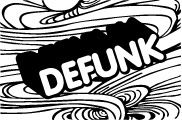What Goes Into a Creative Brief?
At its worst, a creative brief baffles the designer with vague statement and catch phrases; at its best, it guides with a tightly defined strategy and relates with a large goal; and the designer should say "I get it". Creative brief is the soul of the design process and is crucial to its success. They differ in form and terminology, but most cover these 7 major points:
1. What is the Objective? Usually at the top of the creative brief. What action do we want the consumers to take? The most frequent answer is "We want the consumer to buy a product." The objective should be simple and easily communicated.
2. Who are the Target Audience? If you try to talk with everyone, you're not talking directly to anyone. The broader your target, the blander, your message. You need a potrait of the target audience's attitude and usage patterns- beyond mere demographics.
3. What is the Key Consumer Benefit or Core Idea? The one single idea we want the target audience to take out of the design. The essence of this is sacrifice. You have to give up some points to make the important ones stand out. All the great success stories are simple, not complicated. They say one thing - brilliantly.
4. What is the Positioning? There's a need to set your design and message apart from competitors. Positioning is different from consumer benefit as it deals mainly with setting yourself apart from competitors who are claiming the same key consumer benefit.
5. What is the Tone of Voice or Manner? What is the personality of the brand. Watch out for dissonance between design and the company overall message.
6. What is the Media? Understanding the media is always important in a design process. The medium itself invites a designer to think out of the box such as shapes, texture, time to get the message to leap out of the poster, website or tv to the consumer.
7. When is the Deadline? It is a part of the creative brief that leaves no room for personal interpretation. Use it to plan the process you will take to execute the work and make sure you deliver it on time.
1. What is the Objective? Usually at the top of the creative brief. What action do we want the consumers to take? The most frequent answer is "We want the consumer to buy a product." The objective should be simple and easily communicated.
2. Who are the Target Audience? If you try to talk with everyone, you're not talking directly to anyone. The broader your target, the blander, your message. You need a potrait of the target audience's attitude and usage patterns- beyond mere demographics.
3. What is the Key Consumer Benefit or Core Idea? The one single idea we want the target audience to take out of the design. The essence of this is sacrifice. You have to give up some points to make the important ones stand out. All the great success stories are simple, not complicated. They say one thing - brilliantly.
4. What is the Positioning? There's a need to set your design and message apart from competitors. Positioning is different from consumer benefit as it deals mainly with setting yourself apart from competitors who are claiming the same key consumer benefit.
5. What is the Tone of Voice or Manner? What is the personality of the brand. Watch out for dissonance between design and the company overall message.
6. What is the Media? Understanding the media is always important in a design process. The medium itself invites a designer to think out of the box such as shapes, texture, time to get the message to leap out of the poster, website or tv to the consumer.
7. When is the Deadline? It is a part of the creative brief that leaves no room for personal interpretation. Use it to plan the process you will take to execute the work and make sure you deliver it on time.


0 Comments:
Post a Comment
<< Home